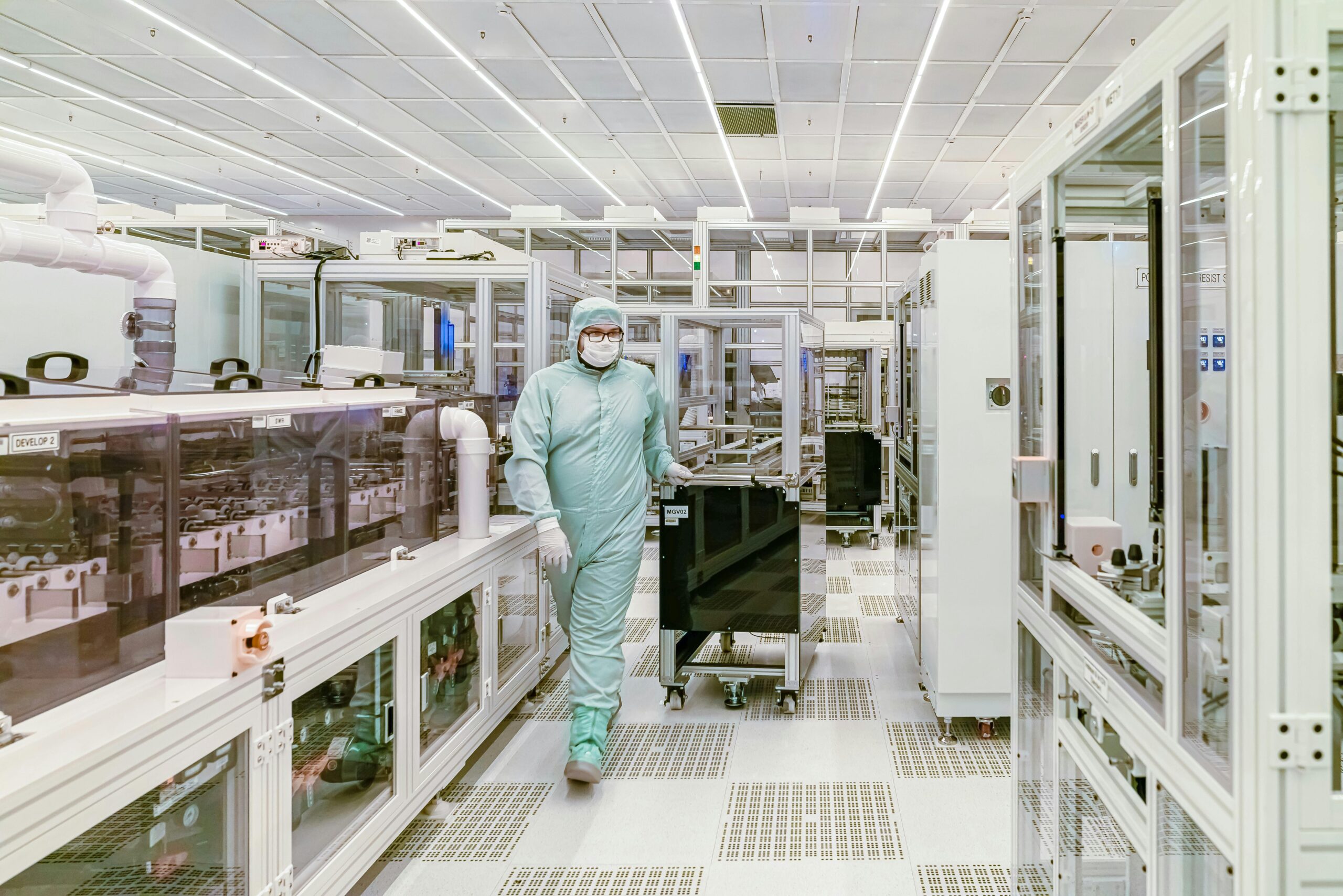In the medical device industry, precision, safety, and reliability are paramount. Medical device manufacturing requires a controlled environment to prevent contamination that could affect product quality and patient safety. Cleanrooms play a critical role in maintaining the high standards required for medical device production, where even minor contamination can compromise the safety and efficacy of the final product. As technology advances, cleanroom solutions for medical device manufacturing have become more innovative, enabling manufacturers to optimize production while maintaining compliance with industry standards.
At Wise Link, we specialize in delivering advanced cleanroom solutions tailored to meet the specific needs of the medical device industry. From strict contamination control to adherence to regulatory standards like ISO 13485 and ISO 14644, our cleanrooms are designed to enhance operational efficiency, reduce risks, and ensure product integrity. In this article, we’ll explore the unique requirements of medical device cleanrooms, innovative solutions for contamination control, and the role of technology in optimizing cleanroom environments.
1. Understanding Cleanroom Requirements for Medical Device Manufacturing
Medical device cleanrooms are designed to minimize airborne particles, control temperature and humidity, and regulate pressure differentials to create a sterile environment suitable for manufacturing sensitive devices. These cleanrooms must adhere to strict standards set by regulatory bodies to ensure products are safe for medical applications.
Key Standards and Regulations:
- ISO 13485: This international standard specifies requirements for a quality management system specific to medical devices, emphasizing contamination control, traceability, and risk management.
- ISO 14644: Defines cleanroom classifications based on the maximum allowable particle concentration per cubic meter. Medical device cleanrooms typically fall within ISO Class 5 to ISO Class 8, depending on the sensitivity of the devices being produced.
- FDA and GMP Guidelines: For manufacturers operating in the United States, the FDA enforces regulations for medical device production under Good Manufacturing Practices (GMP), ensuring that cleanroom operations comply with stringent safety and quality requirements.
Wise Link’s Approach: Our cleanrooms are designed to meet these standards, incorporating features like high-efficiency filtration, customized HVAC systems, and modular cleanroom panels that facilitate compliance with ISO and GMP requirements.
2. Advanced Filtration Systems: The Foundation of Contamination Control
Effective filtration is essential in medical device cleanrooms to maintain air quality and reduce particulate contamination. HEPA (High-Efficiency Particulate Air) and ULPA (Ultra-Low Particulate Air) filters are crucial for achieving the desired ISO class by removing airborne contaminants and maintaining a sterile environment.
- HEPA Filters: Capable of capturing 99.97% of particles as small as 0.3 microns, HEPA filters are typically used in ISO Class 5 to ISO Class 8 cleanrooms.
- ULPA Filters: ULPA filters, which remove 99.9995% of particles as small as 0.12 microns, are often used in higher-class cleanrooms where even minute particles could compromise product integrity.
Innovative Solutions in Filtration:
- Smart Filters with Real-Time Monitoring: Technology-driven filters equipped with sensors can monitor particle levels and airflow, alerting operators to any potential issues.
- Energy-Efficient Filtration: Advanced filtration systems with low resistance and variable-speed fans help reduce energy consumption, contributing to sustainable and cost-effective operations.
Wise Link’s Filtration Solutions: We offer high-performance HEPA and ULPA filtration systems integrated with real-time monitoring, ensuring that our cleanrooms maintain optimal air quality at all times.
3. Optimized HVAC Systems for Temperature, Humidity, and Pressure Control
The HVAC (Heating, Ventilation, and Air Conditioning) system in a cleanroom is responsible for maintaining precise temperature, humidity, and pressure, all of which are crucial for the stability of medical devices during production.
HVAC Control Strategies:
- Temperature and Humidity Control: Certain medical devices require specific humidity levels to prevent material degradation or malfunction. HVAC systems should maintain these parameters within a narrow range.
- Positive and Negative Pressure Zones: Positive pressure in cleanrooms prevents contaminants from entering, while negative pressure areas may be used for specific processes that involve hazardous materials.
- Energy-Efficient Designs: Implementing energy-efficient HVAC designs with variable air volume (VAV) systems helps reduce energy costs while maintaining stable environmental conditions.
Wise Link’s Approach to HVAC: Our cleanroom HVAC solutions are designed to balance performance and energy efficiency. By customizing HVAC systems to meet the unique requirements of each client, we ensure that temperature, humidity, and pressure are consistently maintained, contributing to contamination control and operational reliability.
4. Modular Cleanroom Panels for Flexibility and Scalability
Modular cleanroom panels have revolutionized cleanroom construction by providing a flexible, scalable solution that can adapt to changing needs. These panels are particularly beneficial in the medical device industry, where product lines and manufacturing requirements may evolve over time.
Advantages of Modular Cleanroom Panels:
- Scalability: Modular designs allow cleanrooms to be easily expanded or reconfigured as production demands change.
- Ease of Installation and Maintenance: Modular panels are quicker to install and easier to maintain than traditional construction materials.
- Durability and Cleanability: Made from materials like stainless steel and coated aluminum, modular panels are resistant to corrosion and easy to clean, reducing the risk of contamination.
Wise Link’s Modular Solutions: Our modular cleanroom panels are designed for flexibility and durability, allowing clients to expand or modify their cleanrooms with minimal disruption. With materials that meet ISO and GMP standards, we ensure that modular cleanrooms maintain the required air quality and hygiene levels for medical device manufacturing.
5. Automation and Robotics for Enhanced Efficiency and Precision
The integration of automation and robotics in medical device cleanrooms enhances efficiency, reduces human error, and minimizes contamination risks. Automation can range from simple conveyor systems to advanced robotic arms used in assembly and packaging.
Benefits of Automation in Medical Device Cleanrooms:
- Reduced Contamination Risk: Robots can perform tasks without generating contaminants, unlike human operators.
- Increased Precision: Robotic systems provide precise control over handling, assembly, and inspection, ensuring high-quality output.
- Workflow Optimization: Automated material handling systems streamline workflow, reducing cycle times and boosting productivity.
Innovative Technologies in Automation:
- Automated Guided Vehicles (AGVs): AGVs can transport materials within the cleanroom, reducing human movement and contamination risks.
- Robotic Arms for Assembly: Robotic arms perform complex assembly tasks with high precision, ensuring consistency and quality in medical device production.
Wise Link’s Automation Solutions: We incorporate automation solutions tailored to the needs of medical device manufacturers, providing systems that enhance workflow efficiency while maintaining strict cleanliness standards.
6. Real-Time Monitoring and Data-Driven Insights
Real-time monitoring and data analytics have become essential tools in modern cleanroom management, allowing manufacturers to make data-driven decisions that improve cleanliness and compliance.
Key Elements of Real-Time Monitoring:
- Environmental Sensors: Sensors monitor temperature, humidity, and particle counts, alerting operators to any deviations that could impact product quality.
- Predictive Maintenance: Monitoring systems can identify when equipment requires maintenance, preventing unexpected breakdowns and maintaining consistent performance.
- Compliance Documentation: Data from monitoring systems can be used to generate compliance reports, demonstrating adherence to ISO and GMP standards.
Wise Link’s Monitoring Systems: Our cleanroom solutions include advanced monitoring capabilities that provide clients with real-time data on critical environmental parameters, enabling proactive management and regulatory compliance.
7. Compliance with ISO and GMP Standards
Compliance with ISO 14644 and ISO 13485 standards, along with FDA and GMP guidelines, is essential in medical device cleanrooms. These standards define requirements for air cleanliness, contamination control, and quality management.
Ensuring Compliance in Cleanroom Design:
- ISO 14644: This standard specifies cleanroom classifications based on particle concentration, with medical device cleanrooms typically requiring ISO Class 5 to Class 8 environments.
- ISO 13485: Focused on quality management for medical devices, ISO 13485 emphasizes contamination control, risk management, and traceability throughout the production process.
- GMP Requirements: Good Manufacturing Practices ensure that cleanroom operations comply with safety and quality standards, especially for products intended for the U.S. market.
Wise Link’s Compliance Assurance: All of our cleanroom designs adhere to ISO, GMP, and FDA standards. We work closely with clients to understand their regulatory requirements and provide solutions that support compliance from design through operation.
8. Sustainable Cleanroom Practices in Medical Device Manufacturing
As sustainability becomes a priority in manufacturing, cleanrooms are also evolving to incorporate eco-friendly practices that reduce environmental impact without compromising cleanliness standards.
Sustainable Practices in Cleanrooms:
- Energy-Efficient HVAC and Lighting Systems: Using LED lighting and energy-efficient HVAC systems reduces power consumption and operational costs.
- Sustainable Materials: Selecting materials that are durable and recyclable helps reduce waste and supports long-term sustainability goals.
- Waste Management and Water Conservation: Implementing waste reduction strategies and using low-water cleaning methods helps minimize the environmental footprint of cleanroom operations.
Wise Link’s Sustainable Solutions: We offer cleanroom designs that incorporate energy-efficient components, sustainable materials, and waste management strategies, allowing medical device manufacturers to operate responsibly while maintaining compliance.
Achieving Innovation and Compliance with Wise Link’s Cleanroom Solutions
Innovative cleanroom solutions are essential for medical device manufacturers who need to maintain strict cleanliness standards while optimizing efficiency and compliance. From advanced filtration and modular panels to automation and real-time monitoring,### CTA Options for Medical Device Cleanroom Solutions
Optimise Your Medical Device Cleanroom with Wise Link
From advanced filtration to sustainable designs, Wise Link’s cleanroom solutions support innovation and regulatory compliance. Get in touch to create a high-performance cleanroom tailored to your needs.




